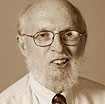Commentary on 1 John 3:1-7
For the six Sundays of Eastertide, the lectionary gives us the opportunity to examine some of the key themes of the First Epistle of John.
Two preliminary words: first, this epistle probably was not originally an epistle. It has all the marks of a sermon and does not begin with a salutation or end with a farewell as traditional letters do.
Second, we do not know who wrote this epistle. It is traditionally attributed to “John,” but we do not know whether that “John” is the same person who wrote the Fourth Gospel.
A reasonable guess is that 1, 2, and 3 John emerge from the same community as the Fourth Gospel does, and they reflect theological and ecclesiological developments in that community.
Indeed, it seems quite possible that the theological debates in the community of 1 John are debates about how they were interpret the Gospel of John, which was likely their central scriptural guide.
Early on, some Christians maintained that the Jesus of the Fourth Gospel was barely human, not so much the Word become flesh as the Word pretending to be flesh. I John was written in part to combat that interpretation. “Beloved, do not believe every spirit, but test the spirits to see whether they are from God. For many false prophets have gone out into the world. By this you know the Spirit of God: every spirit that confesses that Jesus Christ has come in the flesh is from God” (1 John 4:1-2).
In this week’s passage, the author may be interpreting the nature of Christian hope in the light of John’s Gospel.
Sometimes John’s Gospel indicates that Christian hope is entirely realized in the present. When Jesus says to Martha, “I am the resurrection and the life” (John 11:25), the present tense of the verb is crucial to the Gospel’s claim. Now is resurrection. Now is life.
At other times, however, John’s Gospel points to a future hope. Sometimes that is a kind of individual future hope: “In my Father’s house are many dwelling places… I will come and take you to myself” (John 14:2-3). At other times, there seems to be hope more like what we find in 1 Thessalonians, i.e., hope for a general resurrection at the end of time. “Do not be astonished at this; for the hour is coming when all who are in their graves will hear his voice and will come out — those who have done good, to the resurrection of life, and those who have done evil, to the resurrection of condemnation” (John 5:28-29).
Recognizing these tensions about the nature of Christian hope, 1 John tries to resolve them in two ways.
First, the epistle provides a word about now and then.
The author of his “letters” is very honest about what we know and what we do not know.
And the truth is, we do not know very much about then. From the beginning of the Church, books have been written about what heaven looks like, or how to get along with angels, or the Five People You Will Meet in Heaven. For the most part they do no harm, but they lack St. John’s honest reticence: “What we will be has not yet been revealed.” That is exactly what we don’t know.
Here is what we do know now. “See what love the Father has given us, that we should be called children of God” (1 John 3:1).
We do not know for sure what God gives us at the end of life and what God gives those we love. But we do know for sure what God has given us now: astonishing love−love that makes us God’s own children.
And having loved us to the end, surely we can believe that God loves us beyond the end as well.
We get Christian hope confused when we think that our hope is based on now nice we are, or how well we behave, or on some hidden piece of us called “the soul” that will survive through death and destruction.
We come closer to Christian hope when we contemplate the love of God that has made us and those we love, which is strong enough to keep us with God even in the face of death.
Second, our text also contains a word about hoping and seeing.
Saint John promises in his epistle, “Beloved, what we will be has not yet been revealed. What we do know is this: when he is revealed … we will see him as he is” (1 John 3:2).
The verse echoes Paul in 1 Corinthians 13: “For now we see in a mirror dimly, but then we will see face to face” (1 Corinthians 13:12).
The epistle brings the two promises together to make it clear what we shall see face to face and whom we shall see. We will see God.
There is one further theme in our passage: the theme of sin and righteousness. 1 John can be a bit confusing when it comes to sin. The author insists: “If we say that we have not sinned, we make him [Christ] a liar, and his word is not in us” (1 John 1:10). Yet it also claims in the passage for today that “no one who abides in Christ sins” (1 John 3:6). Here, the identity of the believer with Christ is so strong that the believer takes on Christ’s sinlessness as part of her own identity.
In that case, our letter may sound a bit like the apostle Paul who sometimes suggests that the idea of a sinful believer is a contradiction in terms. In addition, Martin Luther thought that the believer was at once justified and sinful.
1 John does not put the two claims in the same sentence, but with something of the same paradoxical imagination, puts both claims in the same epistle.

April 26, 2009